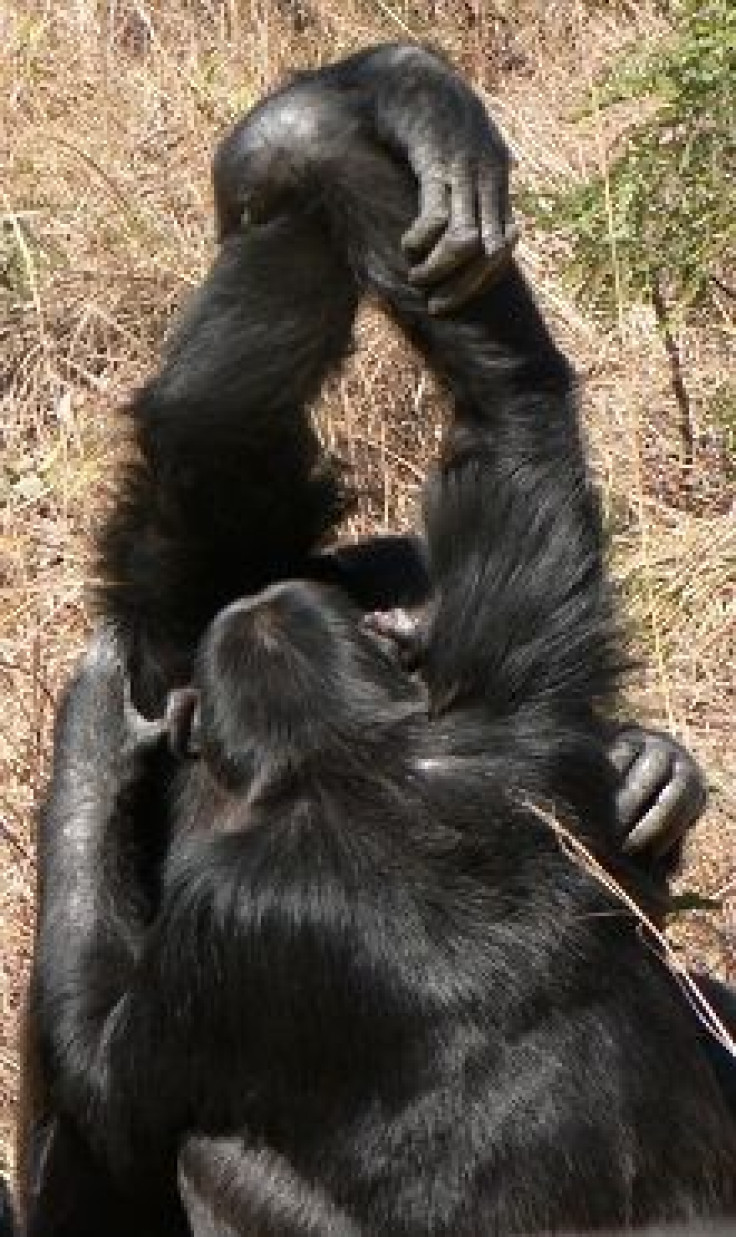Apes Have Social Traditions Just Like Humans, Chimp Behavior Shows

Chimpanzees want to fit in with the popular kids, just like humans do — researchers say chimps will change their behavior to match what others are doing.
A study in the journal Current Biology points to a specific type of behavior in these apes called the “grooming handclasp.” It’s exactly what it sounds like: Two animals engaged in the social interaction of grooming will clasp one another’s hands. But the exact form this rare chimp handshake varies among groups, with some gripping each other’s palms and the others gripping wrists depending on what group they were in. Scientists studying the behavior in Zambia said it’s a “group-level cultural tradition in chimpanzees” rather than one passed down from mothers to their young.
Read: What Monkey Brains and Social Behavior Tell Us About Human Minds
Grooming itself is a social behavior that does more than clean the chimps: It is also a bonding experience, a way to relax and an action that defers to the hierarchy of the chimp community. And only some groups of these apes perform the handclasp. The University of St. Andrews explained that because it varies among groups as opposed to chimpanzee families, “this indicates that, like humans, chimpanzees have the capacity and motivation to learn from each other and fine tune their learned behavior such that it matches with the group ‘norm.’ ”
A behavior passed down through a family line does not explain why chimps within one group will clasp hands in one way and chimps in another will clasp in another.
“It is hard to imagine how any genetic or environmental influences could have shaped the group-specific preferences that we observed,” lead author Edwin van Leeuwen said in the statement. “Within the group chimpanzees converged on one particular variant of clasping. … This indicates a certain willingness to match each other’s styles.”
The study offers a glimpse into the minds of chimps, specifically whether they can form a culture and cultural traditions, which is a controversial topic. The university said because chimpanzees can form a social tradition like a grooming handclasp behavior outside of their family unit, they are “more closely mimicking human culture than previously thought.”
Read: Jungle Falls Silent After Howler Monkey Disease Epidemic
Although chimpanzees are different from humans in many ways, they are similar in others. For one, the genetic differences between the species are miniscule: Humans and chimps share almost 99 percent of their DNA. Chimpanzees can use tools to get a job done, and it’s possible that they can live as long as humans in the wild — recent research has shown if disease, food shortages, predators or other hazards don’t get in the way, a chimpanzee can live almost 33 years. That’s right within the range of life expectancy for those who have similar lifestyles to apes, the human hunter-gatherers still left in the world. Those people live 27 to 37 years.
Understanding the relationship between humans and chimpanzees isn’t just a point of interest. It can also help scientists understand how humans evolved and, in the case of life expectancy, how different conditions changed mortality rates.
© Copyright IBTimes 2024. All rights reserved.











